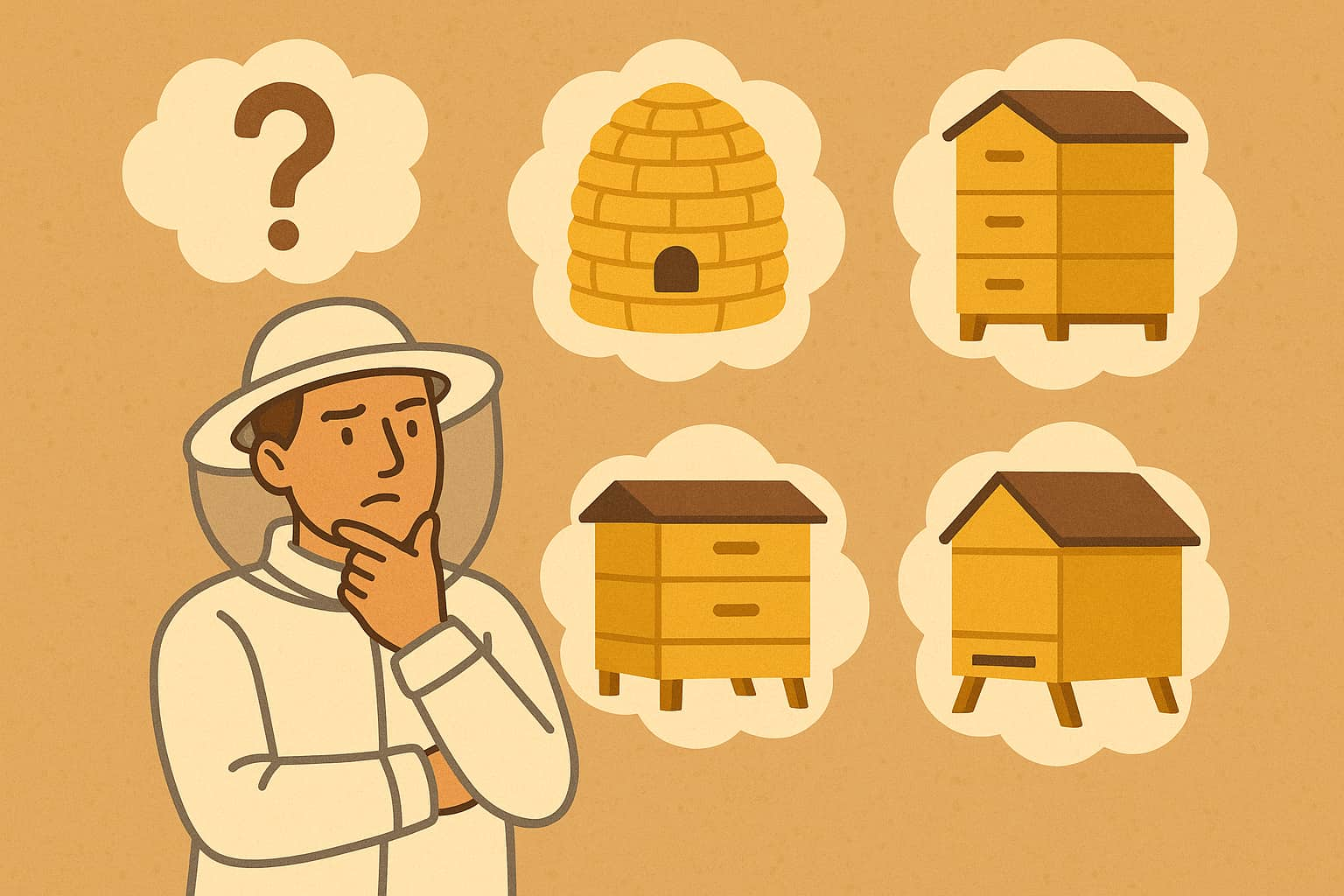Choosing the right beehive is one of the most important decisions a beekeeper will make—especially when you're just starting out. The ideal hive will support your bees’ health, suit your location, and align with your management style. But with so many designs and materials available, how do you know which one is best?
In this guide, we’ll walk you through the most common beehive types, how to match them to your goals, and what factors really matter when choosing a hive.
How to Choose the Right Beehive
The best beehive for you depends on your climate, space, colony size, and beekeeping goals. Langstroth hives are beginner-friendly and modular, while top-bar hives are ideal for natural beekeeping with less lifting. Flow hives simplify honey harvesting. Choose based on your comfort level, available tools, and desired yield.
What Should You Consider Before Choosing a Beehive?
Before buying a hive, take stock of your beekeeping goals, available space, and physical capacity. Here’s what matters most:
-
Backyard size: Smaller yards benefit from horizontal or compact hives.
-
Colony size: If you plan to expand, modular systems like Langstroth hives are ideal.
-
Climate: Warmer climates require ventilation, while colder areas need insulation.
-
Harvesting plans: Want easy honey extraction? Flow hives make it simple.
-
Physical strength: Lifting full boxes can be heavy—top-bar hives eliminate this strain.
Ask yourself: Am I keeping bees for pollination, honey, or education? Your answer will influence the best hive type.
What Are the Main Beehive Types and How Do They Differ?
There are several popular beehive types, each designed to suit different needs:
| Hive Type | Orientation | Pros | Considerations |
| Langstroth | Vertical | Modular, widely used, scalable | Heavy lifting, more equipment required |
| Top-Bar | Horizontal | Low-maintenance, less lifting | Not ideal for honey harvesting volume |
| Warre | Vertical | Natural comb, insulated, compact | Less inspection-friendly |
| Flow Hive | Vertical | Easy honey harvest, beginner-friendly | Higher cost upfront |
Langstroth is the most widely adopted system. Top-bar and Warre hives cater to natural beekeeping philosophies, while Flow Hives prioritise convenience, especially for hobbyists.
Which Beehive Is Best for Beginners?
If you're new to beekeeping, most experts recommend starting with the Langstroth hive. It’s:
-
Modular and expandable
-
Compatible with most beekeeping tools
-
Easy to inspect and manage
For those prioritising low-maintenance beekeeping, a top-bar hive might be better—especially if lifting heavy boxes isn’t feasible. And if harvesting honey cleanly without disrupting the hive is a top concern, Flow Hives are a great alternative.
Browse beginner-friendly beekeeping supplies
Does Climate Affect Which Beehive You Should Use?
Yes—climate is a major factor in hive choice and setup.
-
Cold climates: Warre hives and insulated Langstroth boxes retain heat well. Styrofoam or thick wooden hives prevent winter losses.
-
Hot climates: Opt for hives with ventilated bases or screened bottom boards. Top-bar hives promote airflow across the comb.
Your bees need a stable internal environment, so choose a hive that matches your region’s weather conditions—and consider sun exposure and shade in your placement.
What Size and Material Should You Choose for Your Hive?
Hives come in different sizes and materials, affecting everything from weight to durability.
Size Considerations
-
8-frame boxes are lighter and easier to handle.
-
10-frame boxes offer more space but are heavier when full.
-
You can start with one box and expand as the colony grows.
Material Options
-
Wood: Natural and well-insulated but requires maintenance.
-
Plastic: Lightweight and durable but may retain more heat.
-
EPS Hive: Excellent insulation, great for cold climates, more honey.
Make sure your chosen material supports healthy airflow and insulation for your bees.
Final Tips for Selecting the Right Beehive
Choosing your first hive is exciting—but it’s important to get it right. Here are a few final pointers:
-
Match the hive to your strength, space, and time.
-
Plan for future growth if you think you’ll add more bees.
-
Prioritise quality materials to protect your colony from the elements.
-
Don’t forget hive accessories—frames, foundation, smoker, and tools.
- Buy Once Buy Right
Contact us for help choosing your first beehive. We’re happy to guide you based on your setup, climate, and experience level.
Quick Summary
-
Langstroth hives are best for most beginners: scalable and easy to manage.
-
Top-bar hives are great for natural beekeeping and less lifting
-
Flow Hives offer convenient harvesting without opening the hive.
-
Climate and hive material matter—insulate in cold areas, ventilate in hot ones.
-
Start small, but plan for future expansion.
Choose the beehive that fits your lifestyle, location, and bees—and you’ll be off to a buzzing start!

